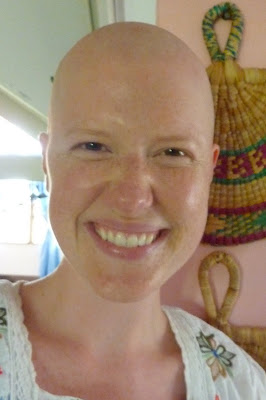La Côte d’Ivoire: Tense Beauty
How despicable is violence! It turns what is charming and
peaceful into something deformed and repugnant. Even the threat of violence
creates a tense environment not easily ignored. In the past 10 years the Ivory
Coast has undergone ongoing war and rebellion and a multitude of various
attacks on the armed forces, refugees and the general population. Easy to
comprehend is the manner in which people remain suspicious of one another and
the way in which commerce, agriculture and tourism have suffered dramatically
in the wake. Once a thriving West African country, endowed with natural and
cultural riches beneficial to the locals and international consumers—bananas,
cocoa and coffee and main and substantial exports from Ivory Coast—and bedecked
with a cultural heritage fascinating for the curious tourist. Tourism is
practically dead; very few people other than those working for the myriad of
non-governmental organizations dare venture into this ravishing country.
A trek with friends
 |
| with the local cocoa farmers outside of Abengourou |
My friend from Switzerland whom I visited last August on my
way to Senegal was finishing up a three-month internship in Abidjan—the
commercial capital of the Ivory Coast. We coordinated my visited so that we
could travel together for several days before she left to return home. Our
route began in Abidjan at an outdoor bar/restaurant establishment generally
called a maquis (pronounced macky),
which serves local fare such as fried plantains, fried sweet potatoes and yams,
attiéké (made from cassava and resembles
couscous with a sourdough flavor), and grilled fish and meats. We proceeded to
the center and the east: Yamoussoukro, the official capital of the Ivory Coast
but rather abandoned by the majority of governmental agencies that prefer the
action and the location of Abidjan, where the largest Christian edifice is
located—very impressive to behold; Lake Kossou, a winsome and tranquil manmade
lake by the damming of the Bandama River in 1973; and Abengourou in the east,
where we made the acquaintance of the Camaye Cocoa Cooperative, which is
composed of over 900 cocoa farmers and aims to protect both the farmers and the
environment. Adventurous and pleasant to be with an old friend, we explored the
some splendid regions of the Ivory Coast.
 |
| in front of one of the former colonial buildings in Grand Bassam |
Back in Abidjan, I was blessed to have another friend who I
met in Dakar who took good care of me and let me stay at her apartment,
becoming a sort of base from which I jumped when I went on my own to the north
and the east for 8 days. She and I and some of her colleagues traveled to Grand
Bassam, which used to be the capital of the Ivory Coast during the colonial
period. Vestiges of the colonial era remain in the form of dilapidated
buildings that have either been invaded by nature or transformed by local
artists and weavers, altogether creating aesthetic pathos of another time. That
same weekend, I left Abidjan with a friend of my Swiss friend, who drove us to
Assinie: a beach spot known for its endless sand and exquisite lagoon. A local
guide took us around to see the enchanting mangroves found in the unique lagoon
characterizing the region with a certain appeal I quite enjoyed.
 |
| at the lagoon of Assinie |
Lone traveler
 |
| Senfou artists in the north |
 |
| whipping the shea butter by hand |
With a little over a week remaining, I decided to get out of
Abidjan and see the north and southeast, both of which were supposed to be
memorable places to visit. From Abidjan, I took two mini-buses to reach
Katiola, where I stopped for the night to be able to run and rest from the
tiring transport. I proceeded to Korhogo, my base for the week. I stayed at a
guesthouse belonging to a Catholic mission. It was so peaceful and well-kempt,
I felt really happy to have found it by the kind recommendation of a French
elderly man who was all to content to give me some advice on how to be safe. I
visited the villages of Waraiéné—home of a large cooperative of weavers and
clay jewelry makers—and Natio—location of the artisanal production of shea
butter. Hiking Mont Korhogo added to the general charm of the region and added
a nice aspect of sport I always enjoy when I am traveling alone.
 |
| learning how to weave with expert weavers of Waraiene |
Finally, I spent my last weekend in Aboisso, which is
located near the border of Ghana and is situated in the middle of palm oil,
cocoa, coffee and rubber tree plantations. I spent a minimal amount of time in
the town itself and made my way towards the plantations as quickly as I could
manage. I started wandering down paths I found and came across a settlement of
cocoa farmers. They invited me to sit down and we started to discuss their work
and their lives. I decided to return to spend the day with them. What a great
blessing to have come in contact with the local people who were interested in
sharing their culture with me, including delicious local food made with
cassava, peanuts and taro leaves. All I had wanted to experience in the Ivory
Coast came to fruition without any disconcerting incidents. The Lord God surely
protected my feet and led me to people who took care of me and provided me with
a deeper understanding of Ivorian culture.
 |
| surprised by a local girl in the middle of taking a picture |




Comments